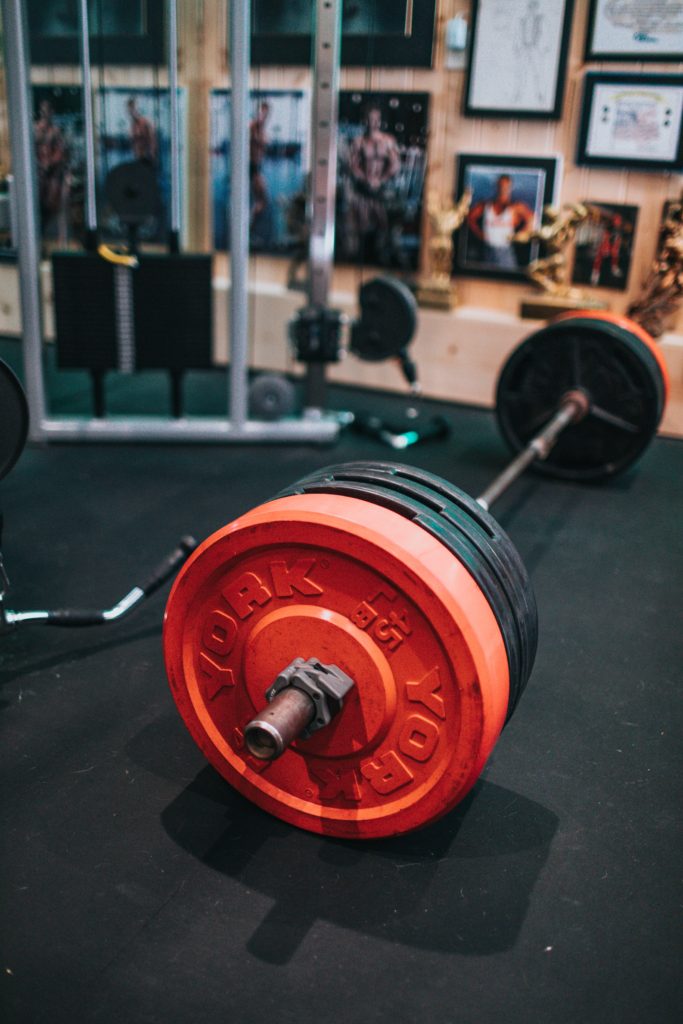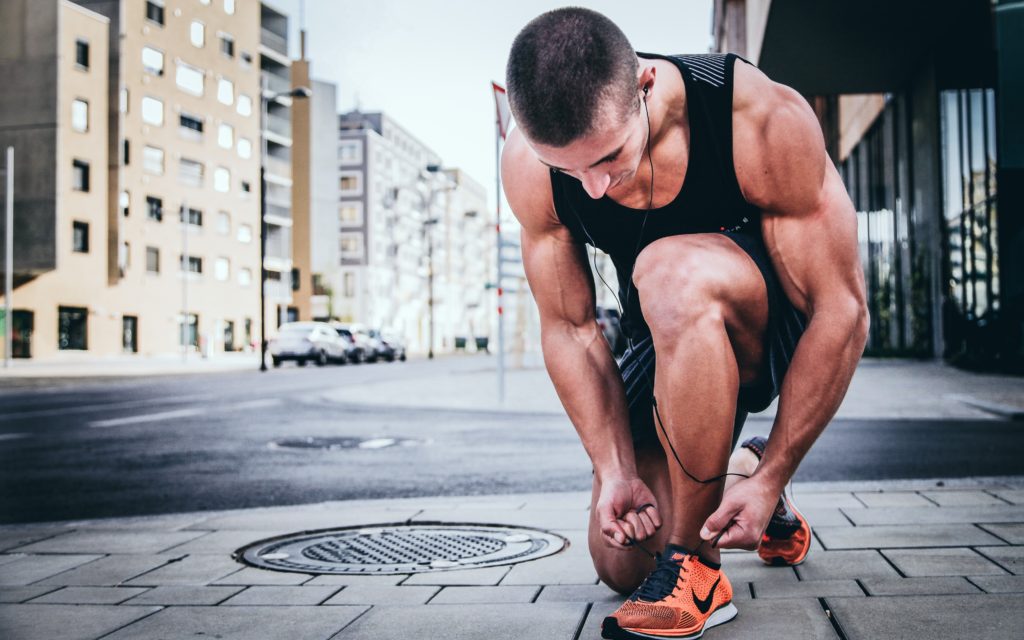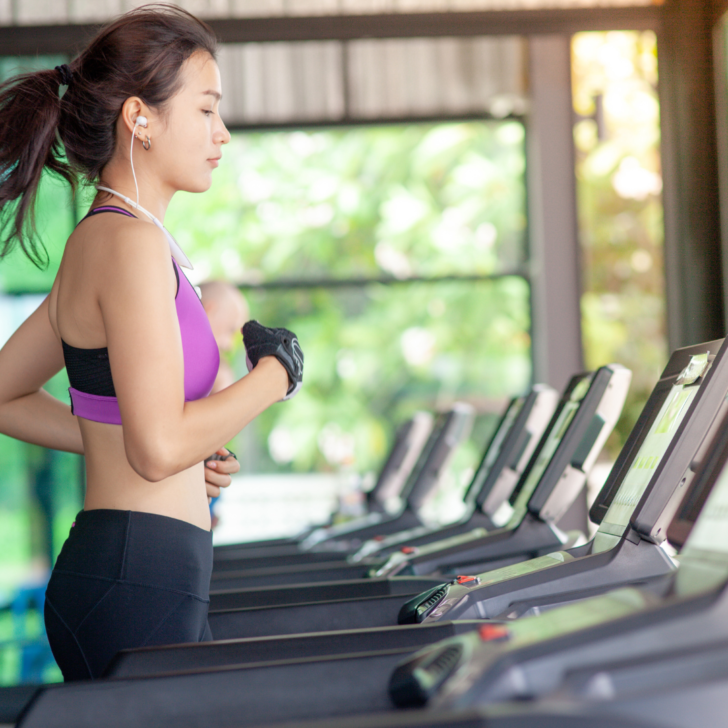When it comes to your workout routine, one of the most important considerations is whether or not you should do cardio before or after leg day.
Some people argue that doing cardio before leg day can help improve circulation and reduce soreness in your muscles.
However, others believe that doing cardio after leg day is the best way to maximize the benefits of your workouts.
Cardio exercises are important as they improve blood circulation to areas of the muscles that need it most. This in turn reduces the healing time for sore muscles.
Leg Day Soreness (DOMS)
The main symptom of DOMS is a dull ache or stiffness in your muscles, which can be felt anywhere from 24 to 48 hours after your workout.
Often, this soreness is most intense in your thighs and glutes, although it can also occur in other areas like your calves or core as well.
Many experts believe that the soreness is caused by micro-tears in our muscle fibers due to the intense stress and strain placed on them during weightlifting.
In addition, factors like dehydration, lack of sleep, and poor posture may also contribute to its development.
Can Cardio Help Treat DOMS?
After completing a tough leg workout, doing some cardio can help to reduce the soreness and inflammation in your hamstrings and quadriceps muscles.
This is due to the fact that cardio increases blood flow to these areas, which promotes healing and reduces muscle damage.
Thus, incorporating some cardio exercise into your routine may be an effective way to treat DOMS and recover more quickly from intense workouts.
How To Reduce Muscle Soreness
To reduce the discomfort of delayed onset muscle soreness, or DOMS, it is important to engage in activities that promote blood flow to the affected areas, such as moderate cardio exercises.
Additionally, you may find relief from stretching, consuming the right nutrients, drinking plenty of water, getting adequate rest and sleep, and using massage or a foam roller to target those sore muscles.
If you are looking for additional stretching equipment that can help with DOMS relief, there are a number of options available.
Some popular choices include:
- resistance bands

- yoga mats

- foam rollers

These tools can be used before or after your workout sessions to help loosen up tight muscles and prevent further damage or soreness.
Ultimately, the key to successfully reducing DOMS is consistency. Incorporating these strategies into your regular exercise routine on a regular basis will help ensure that you continue feeling your best both during and after your workouts.
Is It Better To Do Cardio Before Or After Leg Day?

There is no definitive answer to this question, as the best approach depends on several different factors. There are pros and cons to both cardio before and after leg day, so it is important to consider your individual goals and preferences when deciding which approach is right for you.
Cardio Before Leg Day
Pros:
- Cardio can help to increase circulation and improve the delivery of oxygen and nutrients to your muscles. This can help to optimize muscle growth and recovery after leg day workouts, leading to better performance and results in the long run.
- Doing cardio before leg day can help to reduce fatigue during your workout, allowing you to push harder and get more out of each exercise.
Cons:
- Cardio may lead to increased levels of stress and nervousness, which may make it difficult for some people to fully focus on their workout.
- Some people may find that they have less energy for their workout when they do cardio first, which can impact their ability to perform at their best.
Cardio After Leg Day
Pros:
- Doing cardio after leg day can help to improve overall muscular endurance and address any fatigue that might be present in your lower body muscles.
- Cardio after leg day can be helpful for runners or other athletes who rely on their legs for performance and need to maintain optimal levels of strength and stamina.
Cons:
- Cardio after leg day can put additional stress on your legs, which may lead to overtraining or injury if not done carefully or with appropriate recovery time in between sessions.
- Some people experience soreness or discomfort in the lower body after leg day exercises, which may make it difficult or uncomfortable to engage in cardio workouts right away.
What’s The Best Cardio For Leg Day?
The rate at which the muscles of the legs gain strength reduces when cardio exercises are done along with leg workouts.
If you’re focused on gaining ultimate leg strength, doing aerobics might not help achieve your goal. Although cardio is necessary for healthy living, you don’t necessarily have to do it on leg days if you’re a heavy trainer lifting weights during workouts.
You may have to put some days between your leg day and cardio day to avoid injuries from overstretching.
Cardio Exercises For People Who Lift Heavy Weights

Swimming
Swimming is a great form of cardio to do after an intense leg workout. You will feel the effects in your lower and upper body, as well as all the muscles associated with swimming. This helps heal any delayed onset muscle soreness that you might experience after your workout.
Bicycling
Low-impact cardio, like biking, is perfect for athletes who just completed a strenuous workout. Biking can be done outdoors on an actual bike or indoors on a stationary bike. Or you can go on the stationary bike which operates similarly to actual bicycling.
Walking
Walking is another low-impact cardio option that can be done after intense leg workouts. It’s a great way to increase blood flow and allow your muscles to recover, without putting too much stress on the body.
Whether you do it on a treadmill or outdoors, walking is a simple and effective way to finish off your leg day cardio routine.
Jogging
Jogging is another cardio exercise that can be done after a hard leg workout. It helps increase circulation and boost cardio endurance, which is crucial for any heavy lifter looking to maximize their strength gains.
Stair Master
Using the stair master at a low pace is great cardio for leg day, as it will help you maintain cardio endurance while giving your legs a gentle stretch and burn. You can find the stair master machine at nearly every gym, making it a convenient and easy cardio option to incorporate into your routine.
Butt Kicks
To do this low-impact cardio workout that won’t burn too many calories, follow these steps:
1. Begin in a standing position with your feet hip-width apart and your arms at your sides. Engage your core and glutes to stay stabilized throughout the exercise.
2. Lift one foot off the ground and use that momentum to kick your other leg up behind you, keeping it straight as you do so. At the same time, bring your arms up in front of you in a running motion.
3. Continue kicking your leg back and forth for 10-15 reps on each side, focusing on driving through your glutes to really engage those muscles and get them working during the exercise.
4. To increase the intensity of butt kicks, try doing them faster or holding a light weight in each hand as you perform them for an additional challenge to both your butt and legs as a whole.
Jumping Jacks
Jumping jacks are a great cardio exercise to incorporate into your leg day routine, especially if you want to add some cardio bursts between sets of heavy weight lifting.
1. Start by standing with your feet together and your arms at your sides. Engage your core to keep yourself stable throughout the exercise.
2. Jump your feet apart and raise your arms up above you, keeping them straight as you do so. At the same time, bend at the knees to help propel yourself forward into your next jump.
3. Continue jumping back and forth, alternating between your legs and arms with each rep for 10-15 repetitions.
4. To increase the intensity of jumping jacks, try holding hand weights while performing the exercise.
Cardio Exercises For People Who Lift Light Weights

High intensity interval training (HIIT)
This type of cardio exercise involves alternating short periods of high-intensity activity with periods of recovery, and is one of the most effective ways to burn calories and improve overall fitness
Tabata training
This form of cardio activity is similar to HIIT in that it involves short bursts of intense exercise followed by periods of rest or low-intensity movement. However, tabata workouts are typically done using bodyweight exercises.
Jumping rope
Although simple in nature, jumping rope is an excellent cardiovascular exercise that requires your whole body to work hard and can be done virtually anywhere.
To add some variety to your jumping routine, try incorporating double-unders (jumping twice for each rotation) or various types of hops into your workout.
Rowing
Whether you choose to use a rowing machine at the gym or hop in a rowboat on the lake, this full-body exercise is a fantastic way to burn calories while building strength and endurance at the same time.
Battle ropes
Another fun yet challenging form of cardio training involves using heavy ropes (or “battle ropes”) suspended from fit stands or poles that can be pulled or swung rapidly through full range movements such as tugs-of-war or boxing jabs and uppercuts. Adding resistance bands around each end can also increase the difficulty level further still if desired.
Squat Jumps
1. Start by standing with your feet slightly wider than shoulder-width apart and your toes facing slightly outward.
2. Slowly lower yourself down into a deep squat, making sure to keep your chest up and back flat.
3. As you do this, swing your arms behind you for extra momentum and balance.
4. Once you reach the bottom of the squat, quickly jump up into the air as high as you can, bringing your arms overhead for added height.
5. Land softly on the balls of your feet, then immediately lower back down into another squat and repeat the jump sequence as many times as you can in one set.
Lunge Jumps
1. Begin by standing with your feet together and your hands at your sides.
2. Step one foot forward and bend your knees to lower into a lunge position, keeping your chest up and back flat.
3. Once you are in the bottom of the lunge, explode up by pushing off of the ground with both feet and jumping as high as you can.
4. As you jump, bring one leg forward so that you land in a lunge on the opposite side of where you started.
5. Repeat this movement for several repetitions, focusing on explosive power rather than speed of movement or number of reps completed.
6. To modify this exercise, try doing it on an incline or decline to increase or decrease the intensity of the workout as needed.
Mountain Climbers
1. Start by standing upright with your feet shoulder-width apart and your hands at your sides or clasped in front of you.
2. Bend your knees slightly and lean forward from the hips, keeping your back straight and core engaged throughout the movement.
3. Once you are in a low squatting position, begin driving one knee at a time up towards your chest, alternating between each leg as quickly as possible.
4. As you continue moving your knees up and down in a quick, controlled fashion, focus on maintaining proper form and breathing steadily while engaging your core to maintain balance.
5. Continue doing mountain climbers for 30 seconds to 1 minute, depending on your fitness level, taking breaks as needed to catch your breath or adjust your form if necessary.
Burpees
1. Begin by standing upright with your feet placed hip-width apart.
2. Bend down and place your hands on the floor in front of you, making sure to keep your back flat and your core engaged throughout the movement.
3. Jump both feet back so that they are behind you, landing in a low squat position with your knees bent at about a 90 degree angle. At this point, you should be balancing yourself on your hands and toes, with your body forming a straight line from head to toe.
4. Quickly drive through your heels to push yourself back up into the starting position – keeping your hands firmly planted on the floor for support as needed.
5. Return to step 1 and repeat the exercise as many times as desired to build strength and cardiovascular fitness.
How Much Cardio Should I Do On Leg Day?

Before anything else, you need to establish what the purpose of your workout routine is. Do you want to lose weight or build muscle?
If shedding pounds is your target, then doing a lot of cardio exercises while lightly training your legs would be ideal. However, if gaining mass for your body is the objective, too much cardio work will actually impede that process.
That’s because cardio burns fat and calories which in turn lowers the rate at which muscles develop.
Is It A Good Idea To Do Cardio The Day After Leg Day?
Off days are perfect for a cardio workout, as it will not impact your weightlifting routine negatively. In fact, it might even help to complement your program and improve energy-wise and muscle strength-wise training goals.
Cardio Exercises On Rest Days Can Be Beneficial
- Cardio on rest days can be beneficial because it allows your muscles to recover and rebuild after intense workouts, while still providing a moderate level of aerobic exercise that can help to improve blood circulation and efficiency of the heart and lungs.
- Cardio on rest days is beneficial is that it can enhance overall fitness levels by improving metabolic function and building lean muscle mass.
- Regular cardio exercise on rest days can lower resting heart rate and blood pressure, which reduces the risk of cardiovascular disease or other conditions related to poor circulatory health.
- Performing cardio exercises on rest days is beneficial is that it helps to promote better sleep quality, which allows your body to repair and regenerate more effectively between workout sessions. This enhanced recovery time can ultimately lead to better gains in strength, endurance, power, and other fitness markers over time.
Overall, incorporating regular cardio workouts into your routine on rest days provides a host of physical and mental benefits that can help you achieve all of your fitness goals more effectively over time.
Conclusion
Whether you’re a seasoned gym-goer or just starting out on your fitness journey, deciding whether to do cardio before or after leg day can be a daunting task.
While some people believe that performing cardio before lifting weights will help you burn more calories and improve your performance in the weight room, others argue that doing cardio after leg day will reduce muscle soreness and give you the energy you need to push through a grueling leg workout.
At the end of the day, there is no one right answer when it comes to this question. Whether you choose to do your cardio before or after lifting weights will depend on your individual goals and preferences.
FAQs
Should I do cardio before or after leg day?
There is no definitive answer to this question, as the ideal timing for cardio on leg day will depend on your fitness goals and personal preferences.
Is it better to run at the beginning or end of a leg workout?
Some people may find that running at the beginning of the workout helps to increase their energy levels and boost performance, while others may prefer to run at the end of the workout to get rid of excess lactic acid and reduce muscle soreness.
